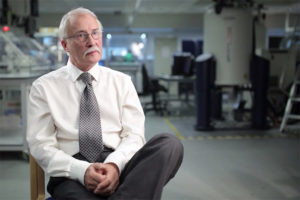Molecular Toxicology
Biochemist Ian Wilson on toxicity of paracetamol, clinical trials, and safe drugs
What are the biological functions of selenium? Which questions about the role of selenium remain unanswered? Harvard Medical School professor, Vadim Gladyshev, speaks on how people discovered the importance of selenium.
For many years, for centuries, selenium was thought to be a toxic element. There are some diseases associated with selenium’s toxicity, for example, white muscle disease and other diseases. And it was a surprise when in the 1950’s there was a study which found that one factor, dietary factor, was helping against liver cirrhosis, and that factor was identified as dietary selenium. It was quite surprising. Later in the 70’s one protein was found, glutathione peroxidase, which was found to contain selenium.
We found that terrestrial organisms have fewer selenoproteins than aquatic organisms. We still don’t know for sure why this is the case. Our hypothesis is that it’s because of oxygen. Oxygen content is a little bit lower in water than in air. That oxygen is a little bit more damaging for terrestrial organisms. So we could link this to their habitat and geography, and apply these genomic approaches to various other systems.
Since the genetic code was discovered it was known that, for example, if the TGC codon (UGC in the RNA form) codes for cysteine that means that any UGC would code for cysteine in any gene in any particular organism. But we find a potential case where one codon might code for two different amino acids. We studied that question and sequenced the genome and we indeed found that this particular codon codes for two different amino acids. We’ve identified the mechanism for that. It turns out that the RNA structure in the untranslated region can reprogram the ribosome so that it can code for one or the other amino acid.

Biochemist Ian Wilson on toxicity of paracetamol, clinical trials, and safe drugs

Biographer and historian of science Naomi Pasachoff on the discovery of radium and polonium, acquaintance with...

Biophysicist Burkhard Bechinger on optical spectroscopy, magic angle spinning, and the orientation of molecule...